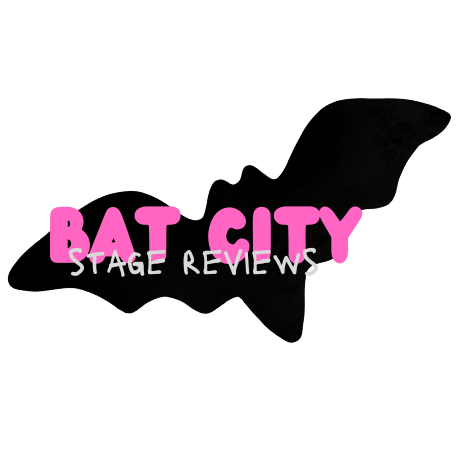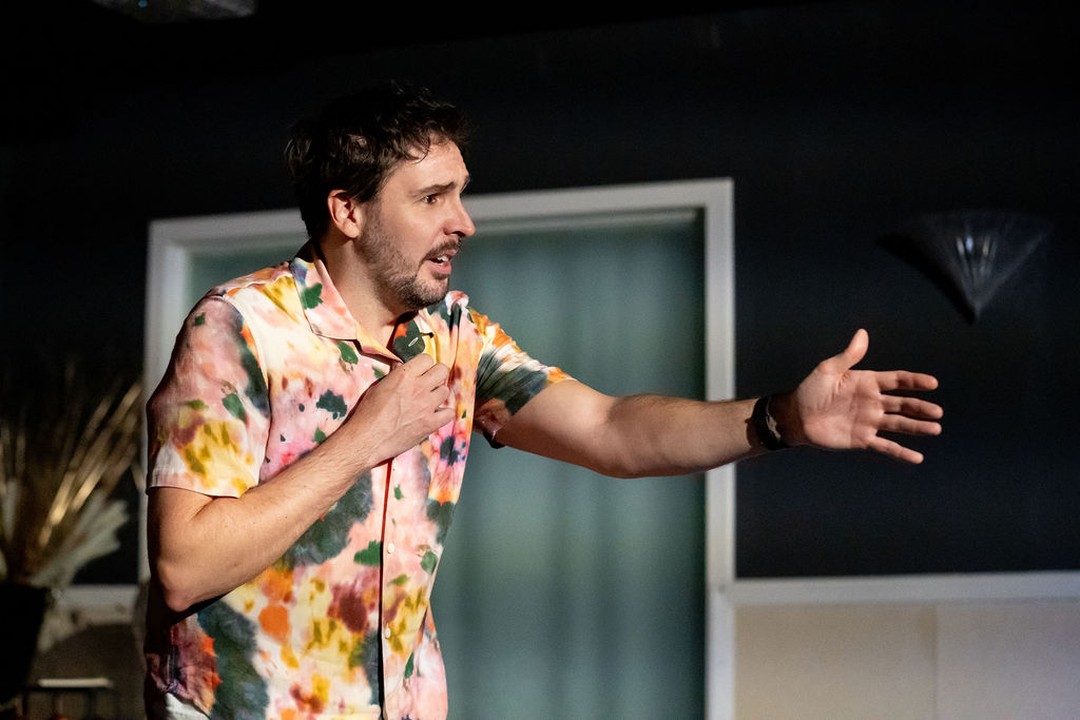Hamlet is a hard show. It’s hard on the actors (title role especially) and the directors. Every choice a production makes, perhaps more than most Shakespeare plays, is going to garner an opinion – How long will an audience sit still for? Which lines are too iconic to cut? Should any lines be cut? How much extra-textual content can be added? Should verse be spoken informally or heightened? How old is Hamlet? Is he gay for Horatio? Is Horatio gay for him? Does the whole Fortinbras and his Norwegian subplot really matter? For this production, the cast of Walking Shadow Shakespeare’s Hamlet has made these choices collaboratively: 10 people are each credited as “Director” in the program. More voices, more thoughts, more opinions: Hamlet is an ambitious show to use for their first try in the collaboratively directed format, and while many elements of the performance shine bright, they ultimately lack a coherent through-line.
For such a Big Show, the cast of eight works well. Some characters are combined, like Aleena Azhar’s Guildencrantz, while others are done away with entirely, like Reynaldo, who Polonius (Brian Hensley) simply speaks to over a Bluetooth headset. It’s all rounded out with some fun audience participation to fill in a few one-scene characters. Oh, yeah! The show’s also an immersive one, with audience members at tables with coasters that say “Yes” or “No” on them, depending on how comfortable you are with actor interaction – “Like a Brazilian steakhouse!” I giggled to my friends – and if the adrenaline rush isn’t enough of a gift for you, WSSP also made sure that participators went home with some swag.
Among the small cast, there are some stand-out performances: one is Diego Arroyo Aceves as both Laertes/First Player; charming, silly, and boyish in both. Another is Leah Luna as Gertrude, who brings wild agony to the surface in the second half. As Ophelia, Stephanie Crugnola is happy, hopeful, and in love without seeming immature.
It’s clear that every member of the cast has a lot of thoughts and feelings about Hamlet and their characters, but internalized concepts are only part of a good performance. Despite a shared love and interest, the collaborative direction of the piece seems to have never gelled into a cohesive vision for the entire show. There were a number of unexpected and smart moments throughout the play, but the moments were only moments, and didn’t often carry through to the rest of the show. For example, the opening scenes have been reshuffled so that the play opens with Claudius (Chelsea Manasseri) and Gertrude’s wedding, with the audience as attendees. It features a cute “Our Love Story” slideshow complete with photoshopped pictures of Manasseri and Luna in cute poses worldwide. Accordingly, from this scene, I assumed we were actually in the room where the wedding is taking place – an excellent immersive set-up. But when the TVs are used later for King Hamlet’s Ghost, he appears to be in the woods. So…are we in the woods? Or is he broadcasting from elsewhere? Where did Hamlet (Mike Crugnola) follow him to, exactly?
When I entered the Sterling Stage bar and saw a large middle aisle and raised platform at one end, I figured most of the action would take place there. At first it did, but as the play went on the actors increasingly used the furthest corners of the rooms. I sat in the immersive seating and found myself turning back and forth in my chair and constantly adjusting my position to be able to see each scene. It just seemed odd that the “stage area” right there in the middle was so often ignored for these tight corners. When the gravedigger/Ophelia’s funeral scene came around way down at one end of the room, I resigned myself to simply not being able to see the action. I imagine this was partly due to lighting issues (a large area of the middle was dark) and partly for Immersive-In-Your-Face reasons, but I think it only became a problem because the production lacked that one important person who always knows what the whole show looks like – e.g., the director.
WSSP’s mission is to break down barriers and make Shakespeare accessible to everyone, and I believe that the experience of this show does that in a number of ways for both actors and for an audience perhaps less experienced with Shakespeare (or just less Hamlet-ed out than me). It wasn’t the best Hamlet I’ve seen, but it was certainly different than any I’ve seen before. Hamlet can be a big risk in any circumstance; risks are unavoidable in art, and they don’t always pay off in a bang.
Also, my personal Hamlet opinion that I am entitled to forever: Fortinbras and Norway can always be cut.
Hamlet runs at the Sterling Stage through January 21, 2025. For tickets and more information, visit Walking Shadow Shakespeare Project online.


Leave a Reply